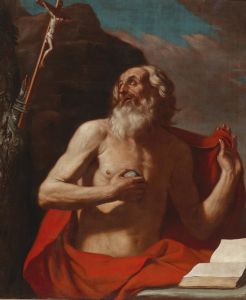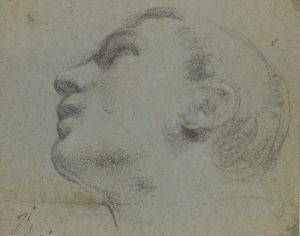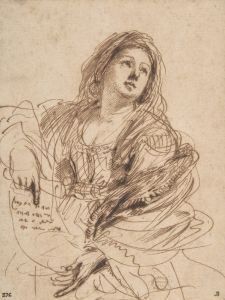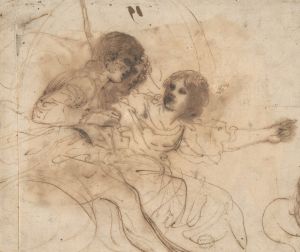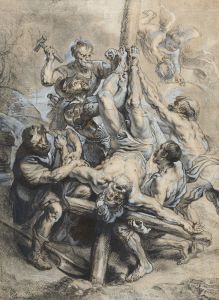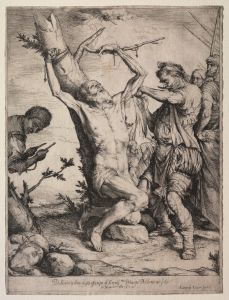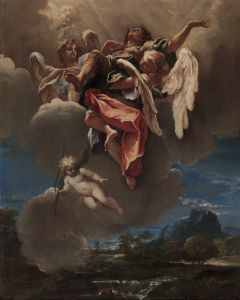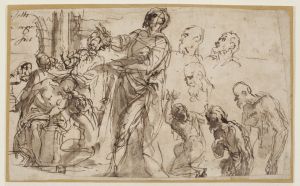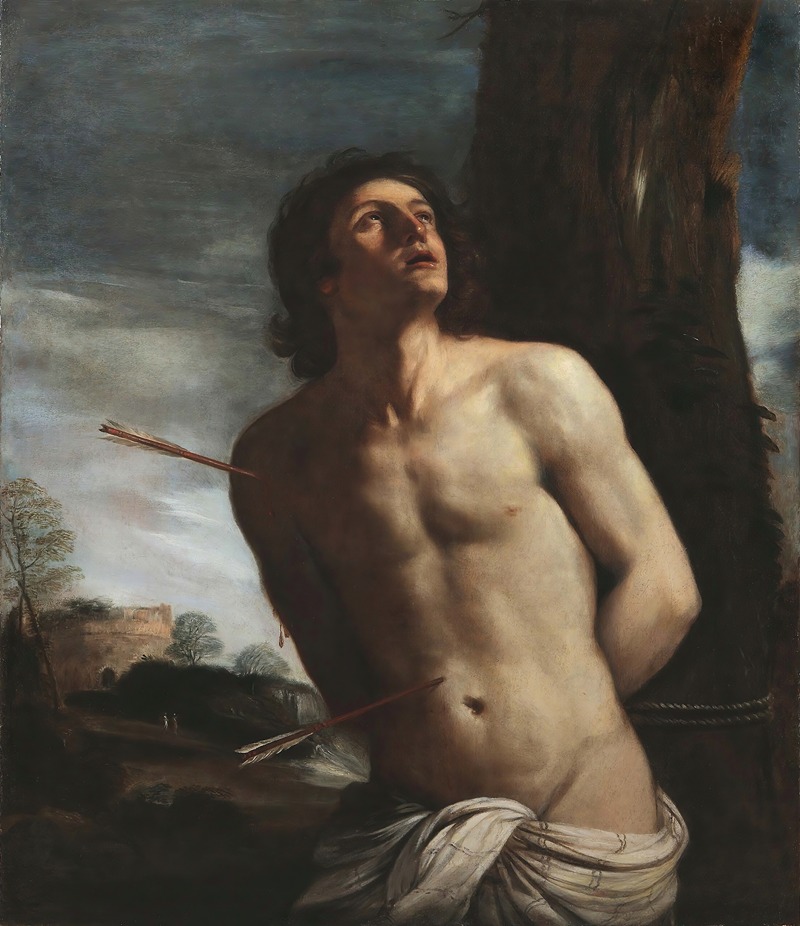
Saint Sebastian
A hand-painted replica of Guercino’s masterpiece Saint Sebastian, meticulously crafted by professional artists to capture the true essence of the original. Each piece is created with museum-quality canvas and rare mineral pigments, carefully painted by experienced artists with delicate brushstrokes and rich, layered colors to perfectly recreate the texture of the original artwork. Unlike machine-printed reproductions, this hand-painted version brings the painting to life, infused with the artist’s emotions and skill in every stroke. Whether for personal collection or home decoration, it instantly elevates the artistic atmosphere of any space.
Saint Sebastian is a painting by the Italian Baroque artist Giovanni Francesco Barbieri, better known as Guercino. This artwork, created around 1650, depicts the Christian martyr Saint Sebastian, who is traditionally represented as a young man tied to a tree and pierced with arrows. Guercino's rendition of Saint Sebastian is notable for its dramatic use of light and shadow, a hallmark of the Baroque style, which emphasizes emotional intensity and realism.
In this painting, Saint Sebastian is shown with a serene expression despite his suffering, reflecting his steadfast faith and acceptance of martyrdom. The composition focuses on the saint's upper body, highlighting his muscular form and the arrows that pierce his flesh. Guercino's use of chiaroscuro, the contrast between light and dark, enhances the three-dimensionality of the figure and draws attention to the saint's face and the wounds inflicted upon him.
Guercino was born in Cento, a small town in the Emilia-Romagna region of Italy, in 1591. He was a prolific artist whose works were highly sought after by patrons across Europe. His early style was influenced by the naturalism of the Carracci family and the dramatic lighting effects of Caravaggio. Over time, Guercino developed his own distinctive approach, characterized by dynamic compositions and a rich, vibrant palette.
Saint Sebastian was a popular subject in Christian art, particularly during the Renaissance and Baroque periods. According to legend, Sebastian was a Roman soldier who converted to Christianity and was subsequently sentenced to death by Emperor Diocletian. He was tied to a tree and shot with arrows, but miraculously survived. After recovering, he confronted the emperor again and was ultimately beaten to death. Saint Sebastian is venerated as a protector against plagues and is often depicted in art as a symbol of resilience and faith.
Guercino's painting of Saint Sebastian is housed in the Museo del Prado in Madrid, Spain. The museum, one of the most important art institutions in the world, boasts an extensive collection of European art, including numerous masterpieces from the Renaissance and Baroque periods. The painting is part of the museum's collection of Italian Baroque art, which also includes works by other prominent artists such as Caravaggio, Guido Reni, and Annibale Carracci.
The painting's provenance, or history of ownership, includes several notable collectors and institutions. It was acquired by the Museo del Prado in the 19th century and has since been a key piece in the museum's collection. The artwork has been the subject of various scholarly studies and exhibitions, which have explored its artistic significance and historical context.
In summary, Saint Sebastian by Guercino is a masterful example of Baroque art, showcasing the artist's skill in rendering human emotion and physicality through the use of dramatic lighting and composition. The painting remains an important work within the Museo del Prado's collection, offering viewers a glimpse into the rich artistic heritage of 17th-century Italy.







